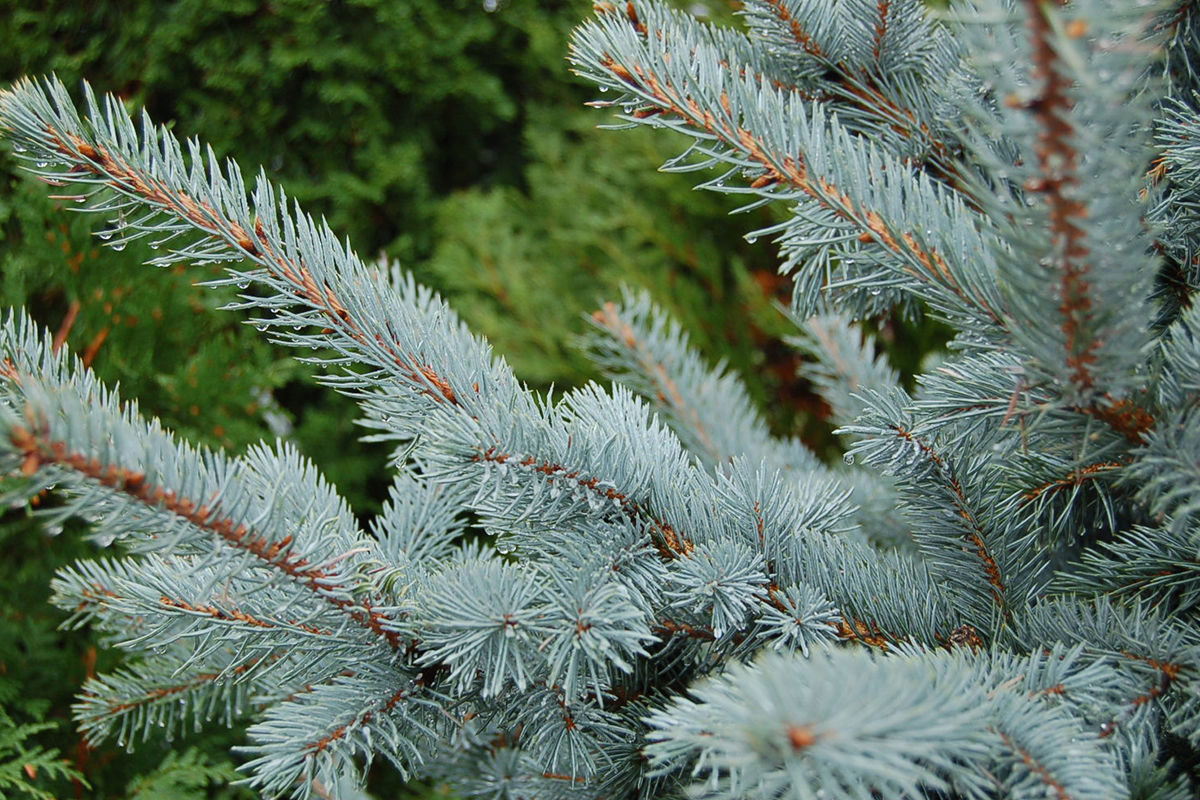All hail the blue spruce

With time, you’ll have one gorgeous tree
Everybody loves a beautiful blue spruce. Picea pungens, or Colorado spruce, is most known for its blue-foliaged forms like Glauca, Hoopsii, Bakeri, and Baby Blue Eyes. It’s hard not to notice one growing in the landscape, especially in the winter.
This stately pyramidal evergreen has melted the hearts of many, yet it is not as popular as it would seem, for two main reasons: cost and performance. Its slow growth habit requires it to spend time in the nursery to grow, and more time equals more money. While it is not considered a difficult tree to grow, i have seen some decline of blue spruces due to a variety of reasons. Unfortunately, when an expensive plant dies we usually notice.
Don’t let this talk you out of planting one. The best location is in full sun to partial shade with moist and acidic soils. Once established, they can withstand some tough conditions such as drought. In a long dry summer, supplemental watering is helpful. Whatever color it is when you buy it is usually the color it stays. So don’t buy a bluish-green one and expect it to turn bluer, it won’t.
Knowing mature size is important for proper placement in the landscape. The species picea pungens can grow more than 50 feet tall and 20 feet wide. If you don’t have that much space, consider one of the semi-dwarf forms like baby blue eyes and hoopsii, or glauca, which is a little larger. As a general rule, the intensely blue forms are smaller, but 30 feet tall is still pretty tall. Pruning a spruce is difficult and specific, so give it room to grow and avoid having to prune it altogether.
Planting a fabulous blue spruce is definitely planting for the future. In the right location there is nothing more beautiful to see out your window on a cold and snowy day. Consider planting one in your garden this spring and be rewarded for many years to come.
Shelly Nold from the 2016 March issue

